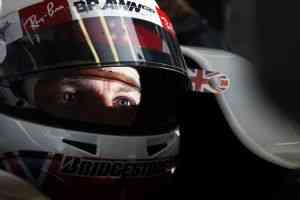
Eyes on the prize… Jenson Button prepares for the final hurdle.
All eyes will be on Jenson Button going into the final two rounds of the 2009 Formula One season as the 29-year-old Brit homes in on his childhood dream of becoming world champion after a testing and character-building nine years in the sport.
With a fifteen point championship lead, courtesy of a string of conservative drivers under pressure in recent races, all Button has to do is finish ahead of his main championship rival, teamamte Rubens Barrichello, or finish within a five point striking distance of the Brazilian, to be crowned champion with one race to spare.
On paper it couldn’t be easier for the man from Frome. But Button knows he will have to tread carefully. The Brawn is no longer the quickest car on the grid, although it is one of the most reliable (touch wood), and that could see Button start the grand prix at the wrong end of the top ten, as he has done in previous races.
So far he has been lucky, but the tiniest amount of ill-luck going into the notoriously tight Senna Ss, a clipped wing, or a coming together, would mount to disaster. If Button has one sole objective going into Brazil it is to avoid a DNF. Pretty much anything else will do.
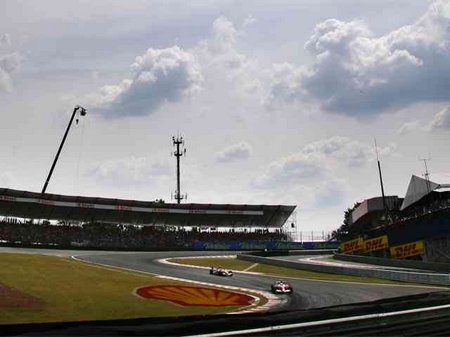
Sau Paulo’s Notorious Senna Ss
Rubens Barrichello always runs strongly at his home race, and with nothing to lose it would not be a shock to see him transcend the car to put himself at the front of the field, putting Button under serious pressure to stay in tow.
Previous British World Champions – Will Button join them?
Mike Hawthorn (1958), Graham Hill (1962, 1968), Jim Clark (1963, 1965), John Surtees (1964), Jackie Stewart (1969, 1971, 1973), James Hunt (1976), Nigel Mansell (1992), Damon Hill (1996), Lewis Hamilton (2008).
Sebastian Vettel retains an outside chance of winning the title after his dominant display in Singapore last week. All the Red Bull driver can do his fight for the win and hope that misfortune intervenes for his Brawn rivals.
Elsewhere, Lewis Hamilton will be looking to carry his momentum from Singapore and Japan to a track with should suit the McLaren, providing his KERS system is at full working order down the long, climbing start/finish straight.
Teammate Heikki Kovalainen joins a long list of drivers looking to impress his current – and prospective – employers to secure a drive next season, amid growing speculation that Kimi Raikkonen is on his way to McLaren.
Nick Heidfeld, Giancarlo Fisichella, Kazuki Nakajima are other drivers that will have to impress to hold on to their seats.
Felipe Massa will be in the garage at Ferrari for this home race following news that his eye has fully recovered. He will watch on as Kimi Raikkonen prepares for his penultimate race for the Scuderia, the scene of his 2007 championship glory.
The Brazilian Grand Prix
The 71-lap race takes place at the atmospheric 4.309km (2.677-mile) Autódromo José Carlos Pace in Interlagos.
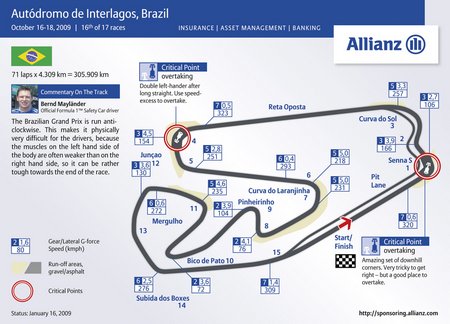
The track is situated between two man-made lakes that provide water and electricity to Sao Paulo, giving rise to the traditional name of Interlagos. It first hosted the Brazilian Grand Prix in 1973, since when there have been several changes to the layout. The most significant alteration was in 1990, when the original 7.8km (4.8-mile) circuit was shortened to its current length. The track was renamed in the late 1970s after local hero José Carlos Pace, who won the only Grand Prix of his career at the circuit in 1975.
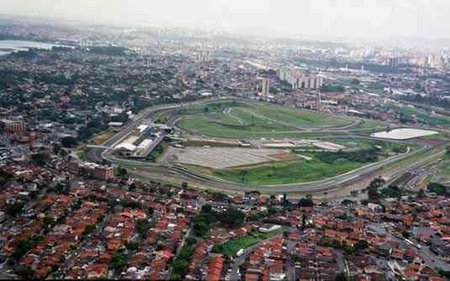
The track is one of only three circuits on the calendar that runs in an anti-clockwise direction, making it physically tough for the drivers. It is notoriously bumpy and, at 800 metres above sea level, is the highest racetrack of the year.
Circuit Statistics
Formula One Brazilian Grand Prix Sau Paulo
- Date: 18/10/09
- Circuit Length: 4.309km
- Race Distance: 305.909km (71 laps)
- Winner 2008: Felipe Massa Ferrari
Circuit Guide
[youtube]https://www.youtube.com/watch?v=wdUEbMmUCnc&feature=PlayList&p=62A7DCA1926E2E00&index=44[/youtube]
Drivers Eye:
Lewis Hamilton: “My highlights are Turn One, braking into the long left-hander which bends right and takes you out onto the back straight; Ferra Dura, which is a fast right-hander where you body is squeezed hard into the side of the car, and the main straight: you accelerate hard uphill and you can even hear the crowd and the Brazilian drums playing in the grandstands.
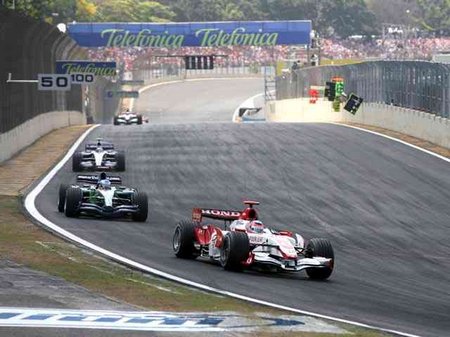
“One of the greatest things about racing at Interlagos is the crowd. There s such a great atmosphere; the fans have so much energy and life. It s a party while you re working, and it s great to see everyone happy.â€
Robert Kubica: “The Interlagos track is very nice to drive. Especially sector 1 with the first three corners is quite challenging. Turn 1 is blind and therefore it is difficult to find the ideal braking point there. The final sector goes up a huge hill and consists of a couple of left turns.
“In Brazil we drive anti-clockwise, which is physically quite tough as we are used to driving the other way round. If it rains in Interlagos, driving will be very tricky as there is lots of standing water on the track. So I m hoping for good weather.â€
Heikki Kovalainen: “The Interlagos circuit is quite a challenging one for the drivers because it s anti-clockwise, which, after a season of racing on clockwise circuits, puts quite a strain on your neck muscles. But you quickly forget that once you get out on the circuit it s an incredible racetrack, really demanding but very satisfying when you get a lap right.
“Interlagos hasn t traditionally been a circuit where we have excelled, but we feel that we ve resolved quite a few of the issues that affected us at this race last year, and using KERS Hybrid particularly up that long hill out of the final corner should be a considerable benefit both in qualifying and the race.â€
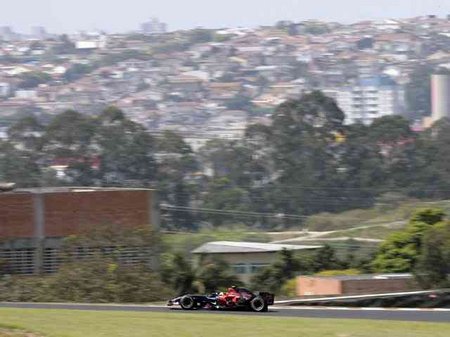
Nick Heidfeld: “Interlagos is a fantastic and very challenging track. Because you drive it in an anti-clockwise direction, it puts a real strain on your neck muscles. The circuit used to be full of horrible bumps. Having it resurfaced before the 2007 Grand Prix made a huge difference, but by 2008 the track wasn t as good. I ll be interested to see what kind of condition it is in now.
“In the last two years we had some exciting championship deciders there, with the weather always ready to tip the scales. There could be a repeat in 2009, even though Brazil isn t the final race this time.
“I m in two minds about São Paulo. The churrascarias are really special, and I guess the city has a great deal to offer. On the other hand you hear about all these muggings year after year, which puts you off any major excursions. I m looking forward to seeing Felipe (Massa) in the paddock again.â€
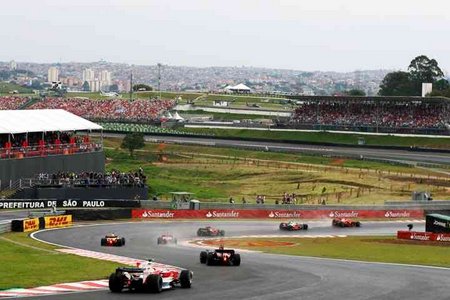
INTERLAGOS – THE TECHNICAL CHALLENGE
The high altitude and a bumpy track surface provide the two biggest engineering challenges at the Autódromo José Carlos Pace. At 800 metres above sea level, the reduced atmospheric pressure at the circuit reduces engine power and has a negative effect on aerodynamic performance.
The track was resurfaced prior to last year’s race, but some of its notorious bumps still remain, particularly in the braking area for Turn 4, the ‘Descida do Lago’. To avoid bottoming out, the cars have to run with increased ride heights, which reduces the effectiveness of their diffusers.
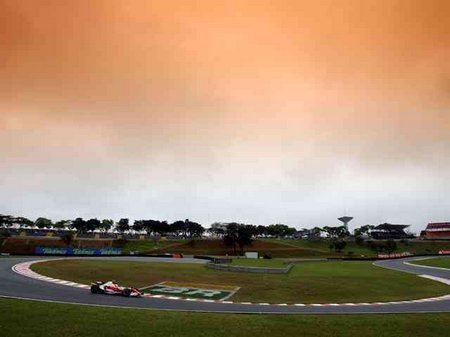
There are two overtaking points on the lap: into the ‘S do Senna’ at the start of the lap, and under braking for the ‘Descida do Lago’ left-hander at the end of the back straight. However, the most important corner is ‘Juncao’, Turn 12, from where the cars accelerate up the hill towards the start-finish straight. Good traction at the exit is vital to achieving a good lap time.
Bridgestone are taking their soft and medium compound tyres to the race which is one step harder than the rubber used at last year’s Brazilian Grand Prix. However, the twisty in-field could still result in some graining early in the weekend when the track surface is still green.
Full throttle: 61%
Brake wear: Medium
Downforce level: Medium / High – 8/10
Tyre compounds: Soft / Medium
Tyre usage: Medium
Average speed: 214kph (133mph)
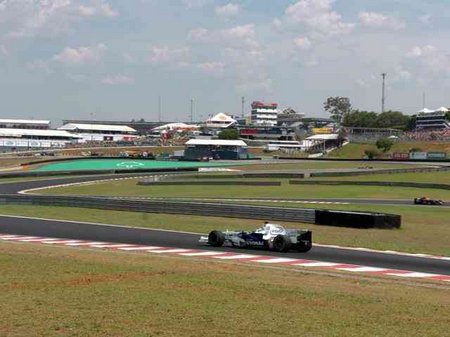
Technical Insight with BMW Sauber’s Willy Rampf: “The Brazilian track is one of the few where the cars run anti-clockwise. The crucial part of Interlagos is the middle section, where the turns come thick and fast. This calls for good downforce, traction and balance. Strong engine output is critical in the final sector, in particular, where the start/finish straight climbs steeply. The recent track resurfacing has evened out a lot of the bumps.â€






